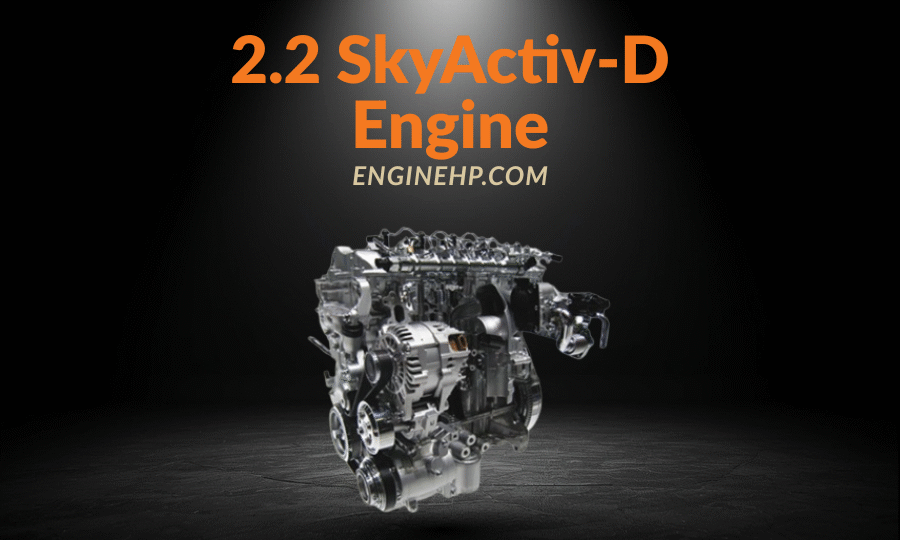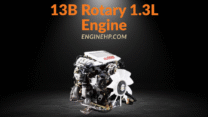
Mazda Diesel Engines: 2.2 SkyActiv-D Engine Hp, Reliability, and Performance
Introduction
The Mazda 2.2 SkyActiv-D engine changed the diesel engine with its low-emissions high power, and real-world efficiency. It continues to power popular Mazda cars around the globe.
This article will provide information about the 2.2 SkyActiv-D’s top characteristics, its driving capabilities and what it can do to fix problems and the best ways to care for it to ensure it lasts for more than 250,000 miles. I’ll also give you buying and money-making strategies (best oils as well as suggested OBD2 scanners, spare parts) as well as a comparative of options and a quick FAQ to get quick answers.
Engine Overview
- Mazda is the manufacturer of this vehicle (SKYACTIV group).
- The engine is known as the 2.2 SkyActiv-D. In certain areas, it is equipped with the codes SH-VPTS and SHVPTR.
- Production and first fitting First fitment CX-5 is the very first vehicle to incorporate it into production at the time of 2012. Since then, it has been utilized for various models, including the Mazda6, CX-5, CX-3 as well as other models depending on the year and the market.
- DOHC (16-valve), common rail direct injection diesel that has turbocharging. The SkyActiv-D has a two-stage/sequential turbo-charging setup in certain tunes.
- Owners claim that this diesel has excellent performance and fuel efficiency, as well as torque at low rpm, and it is well balanced, but there are some weaknesses that must be addressed.
Technical Specifications
| Specification | Details |
| Manufacturer | Mazda |
| Production years | 2012–present |
| Cylinder block material | Aluminum |
| Cylinder head material | Aluminum |
| Fuel type | Diesel |
| Fuel system | Common rail direct injection |
| Configuration | Inline |
| Number of cylinders | 4 |
| Valves per cylinder | 4 |
| Valvetrain layout | DOHC |
| Bore, mm | 86.0 mm (3.38 in) |
| Stroke, mm | 94.3 mm (3.70 in) |
| Displacement, cc | 2,191 cc (133.7 cu in) |
| Type of internal combustion engine | Four-stroke, turbocharged |
| Compression Ratio | 14.0:1 |
| Power, hp | 173 hp (129 kW) @ 4,500 rpm |
| Torque, lb ft | 310 lb ft (420 Nm) @ 2,000 rpm |
| Engine weight | – |
| Firing order | 1–3–4–2 |
| Engine oil capacity, liter | 5.1 L (0.3 filter capacity) |
| Engine oil weight | 0W-30 |
| Oil change interval, mile | 12,000 (20,000 km)/12 months |
| Cars with this engine | Mazda CX-5 (KE, KF), Mazda Mazda6 (GJ, GL), Mazda BM Mazda3 XD Astina |
Note: Specifications vary based on the year and market (tuning differs across Europe, Japan, and the United States/Canada). Always confirm the exact torque and power for your VIN and market.
1.5 SkyActiv-D Engine
Performance and Driving Feel
The 2.2 SkyActiv-D engine feels similar to a diesel that has plenty of torque:
- Low-end punch: The engine generates lots of power at low revs and, as a result, the engine “feels punchy” off the line and is easy for driving at speeds on the highway. This is great in towing and driving loads. Many owners say that the car responds fast even at speeds that are less than 2,000 RPM.
- Smoothness & refinement: In comparison to earlier diesels, it’s quieter and more smooth while it idles due it is tuned to the cylinder/combustion and has better mounts. But, you’ll hear the diesel’s noise when you accelerate with a lot of force.
- Power delivery: A dual-stage, sequential turbo system makes the power delivery feel seamless A small turbo can help the engine speed up when it is at a low speed while the larger turbo is used for the intermediate pull. This makes those “turbo lag” feelings go away.
- Fuel economy: The real-world average for fuel efficiency is between 5 and 7 L per 100 km (combined) depending on the vehicle, model and the type of driving. A high-performance highway is an important selling point.
- Ideal conditions: The best conditions are steady interstate driving, mixed-city commutes using a light touch to the gas or towing. It is crucial to look after EGR and DPF. DPF and EGR when you are on short trips that require a lot of stops and restarts (see the maintenance).
Common Problems and Weak Points
Forums and owner reports have identified the following flaws. I provide the cause the problem, a few symptoms, and a feasible solution for each.
Oil consumption / oil burning
- Cause: The reason is damaged piston rings seals for the injector (in older engines that have lots of miles) and/or the oil control ring glazing due to the build-up of soot and DPF conditions.
- Symptoms: The level of oil is higher between refills There is a bluish smoke when the engine is running and the interval between top-ups is less.
- Simple solution: The best solution is to test the oil level in between services and use the recommended lower-ash oils (0W-30 or 5W-30) and change the oil more frequently when there’s a lot of soot, then replace the seals on the injectors or rings if consumption is excessively high. Avoid letting your DPF become dirty, and make sure you don’t let your vehicle idle for long.
Timing chain stretch / noise
- Cause: The reason is wear and tear on the chain tensioner, and dirt from the old oil (or failing to change the oil enough often). Mazda has added TSBs and software to various markets to identify the slack.
- Symptoms: The symptoms include: When your engine runs cold it rumbles, mainly in the front. Some vehicles show the DPF indicator or even ECU code when they detect the presence of slack.
- Simple solution: Detect problems early by performing audible tests and taking an expert examine them. Replace the tensioner and chain whenever required. Use the appropriate kind of oil and ensure it is in good condition.
Injector seals / injector leaks
- Cause: The cause is excessive wear on high pressure systems as well as sealing components (older miles).
- Symptoms: a strong smell of diesel, a leak on the exterior, a rough idle and codes for fires that aren’t working.
- Simple solution: The easiest fix is to replace the seals, and then have the injectors tested for flow. It’s typically cost-effective to change the seals every 80,000 – 160,000 kilometers, based on their condition.
DPF / EGR carbon buildup
- Cause: The short distances traveled and the low temperatures of exhaust could result in an incomplete passive regeneration which could lead to carbon accumulation inside and around the EGR or intake.
- Symptoms: Power loss, frequent active DPF regenerations and warning lights are all indications.
- Simple solution: The simplest solution is driving for longer durations of time with constant motorway speed on a regular basis. If your DPF/EGR has become clogged and you are unable to clear it, you might need to employ a professional to clean it or replace it.
They are simple to handle when you manage them properly. SkyActiv-D performs best when owners perform specific maintenance for their diesel vehicles. Forum posts and owner postings demonstrate these issues repeatedly.
Reliability and Lifespan
Many owners report they have found that the 2.2 SkyActiv-D can last from up to 350,000 km before it requires a major repair. If you maintain your timing chain and injectors and oil maintenance the vehicle can last for more than 250,000 miles. The main factors that impact the reliability of your vehicle are:
- Oil quality & change intervals: The quality of the oil and when you should change it to OEM-spec oil and changing it at regular intervals can keep your injectors and chains in good order.
- Driving mix: The long journeys on the highway reduce the burden of EGR and the DPF as well as the EGR. Short urban cycles increase the need for soot as well as regeneration.
- Service history: Frequently replacing worn-out components (timing chains seals, injectors, seals) and repairing leaks in coolant and oil will make the car last for longer.
Owner feedback summary: The owners appreciate the power and efficiency of their engines however, they also recommend that you “be proactive with oil and timing chain checks” to keep the engine in good shape for a long period of time.
Maintenance Tips
Recommended oil & intervals
- Oil type: Mazda recommends using 5W-30 or 0W-30 oil (see the owner’s manual and ACEA/API standards). Make sure to use OEM oil or a highly rated, complete synthetic that is in line with Mazda’s requirements.
- Oil change interval: Mazda generally states that the interval for oil changes equals 15,000 miles or 12 months. If you make frequent short trips or tow objects then you need to limit the duration of this interval.
Spark plugs / glow plugs
- If you’re having trouble starting your diesel engine after it’s been cold Check your glow plugs. SkyActiv-D utilizes the technology of ceramic to aid in cold starts.
Simple DIY checks
- Look for leaks of oil around the housing for the oil filter or valve cover. Also, check for leaks around the seals on the injector.
- When you start cold be on the lookout to the timer chain shake.
- Every month, you should check the level of oil and increase it if necessary.
- If you’re able, go for an extended drive along the highway every month to allow your DPF to regenerate.
Best Oil for 2.2 SkyActiv-D Engine
Full-synthetic 0W-30 that satisfies ACEA C3 or OEM Mazda Ultra standards is the ideal oils for the 2.2 SkyActiv-D engine. Mobil 1 ESP, Shell Helix Ultra, and Castrol EDGE are some of the most well-known brands that meet the ACEA/API standards. Select an oil with Mazda approval or ACEA C3 approval.
Recommended OBD2 Scanners for Diagnostics
If your vehicle is a diesel car you should look for an OBD2/diagnostic device that is able to detect manufacturer codes as well as live diesel data. A few options include those from the Autel MaxiCOM Series, BlueDriver (for basic OBD2) and more advanced Autel and Launch products for injector data as well as timing chain diagnosis. Before you visit the store, verify the state of DPF regeneration or balance of the injector, as well as trouble codes by using these.
Engine Alternatives
- Mazda 2.2 SkyActiv-D vs older MZR-CD 2.2: SkyActiv-D is a better choice both for the environment and economy because it has a less compression and more modern injector. It’s also cleaner, lighter plus more energy efficient.
- 2.2 SkyActiv-D vs SkyActiv-G petrol 2.0: Diesel wins in terms of the torque and fuel efficiency and fuel efficiency, while petrol is favored due to its ease of servicing as well as having fewer DPF and EGR issues. If you typically drive short distances around the city, opt for petrol as it costs less to run and is more easy to maintain. If you typically drive long distances and tow objects, pick diesel.
- 2.2 SkyActiv-D vs competitors (VW 2.0 TDI, BMW 2.0 diesel): Mazda’s 2.2 engine is focused on pure combustion, using low compression as well as a sequential turbo. Other engines might have different limitations, such as tuning repairs, maintenance costs, or emissions hardware. If you’re happy with the way the maintenance of diesel engines is handled and maintained, the 2.2 is a great choice to save money.
FAQs
Is the 2.2 SkyActiv-D engine reliable?
Answer: Absolutely, so you take good care of. Owners claim that the majority of these cars have covered between 200,000 and 350,000 miles. Making sure to take care of the timing chain, oil and injectors is extremely crucial.
How long does a 2.2 SkyActiv-D usually last?
A: With a good service, 250,000 kilometers are typical; others exceed 300,000 miles. Inattention to the vehicle (not altering the oil regularly enough, or taking short trips) will reduce its lifespan.
Does it use a timing belt or a chain?
It’s got the ability to run a timing chain. It’s normal to encounter issues with tensioners and wear on the chain. If your vehicle has miles, check for the sound of a rattle and examine the problem.
What cars use the 2.2 SkyActiv-D?
First spotted first on Mazda CX-5 (2012 from 2012 onwards) and is also used in Mazda6 and various Mazda cars with tuned versions dependent on the year and the market.
What oil should I use for the 2.2 SkyActiv-D?
Use a complete synthetic 5W-30 or 0W-30 that is in line with the OEM/ACEA C3 specifications according to what Mazda suggests. Check out your owner’s manual to find the correct specifications for your year of manufacture.
Conclusion
Its Mazda 2.2 SkyActiv-D motor is an economical, modern diesel engine that drivers who desire an elegant feel for diesel, high low-end torque and high road fuel economy will love. It’s ideal for those who commute for long distances or carry out light transport. Follow Mazda’s oil and maintenance guidelines, and keep an eye at the timing chain and the engine will be running for long periods of time without issues.










Leave a Reply